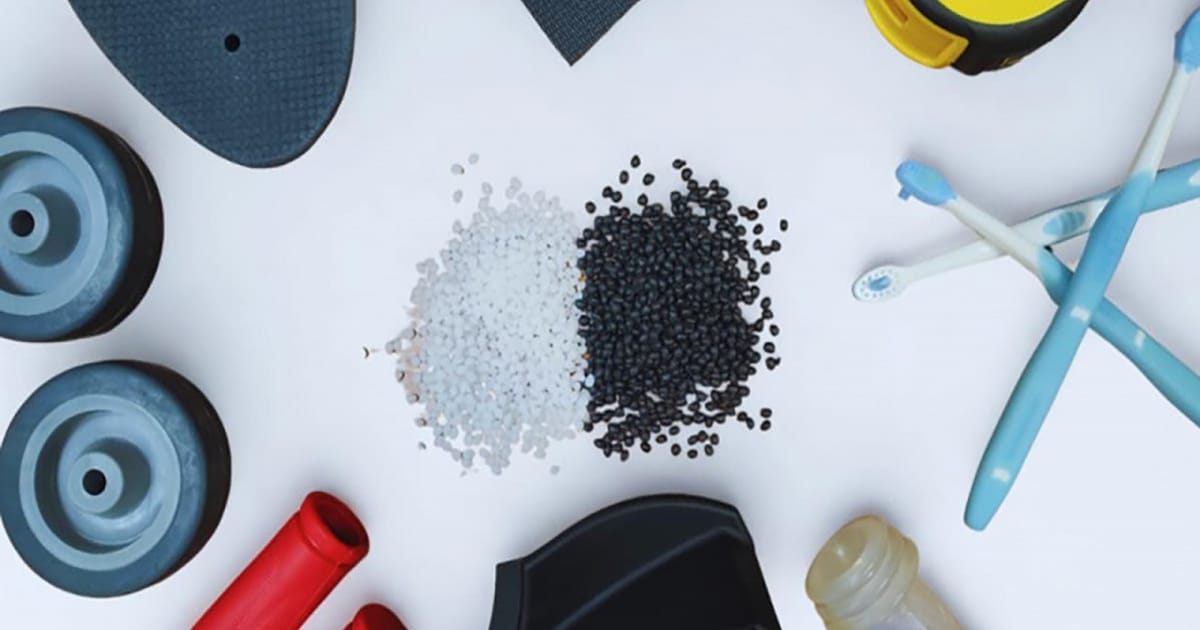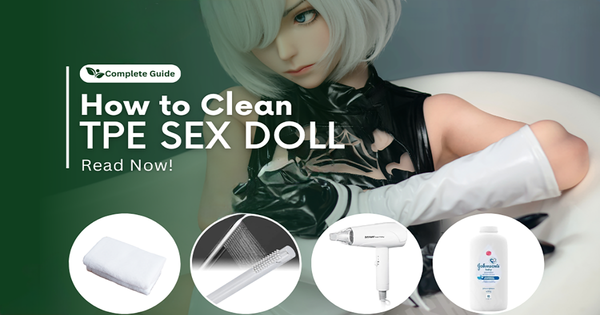Comprehensive Analysis of the Skin-Friendliness of TPE Materials

When we talk about whether a material is “skin-friendly,” it’s not just about whether it feels soft to the touch. Skin-friendliness is a broader idea—it’s about how a material interacts with our skin in real life, from comfort and safety to adaptability during long-term use.
One material that has really made a name for itself in recent years is Thermoplastic Elastomer (TPE). Known for its flexibility and comfort, TPE has become a go-to choice in industries where skin contact is constant. You’ll find it in baby pacifiers, cosmetic tools, medical devices, and yes—even adult products. Anywhere skin meets material on a regular basis, TPE often shows up as the safer, softer option.
In this article, we’ll break down what makes TPE stand out when it comes to skin-friendliness. We’ll look at its benefits, how it works on a technical level, where it’s commonly used, and the limitations you should know about. Think of it as a friendly guide to understanding why TPE has become one of the most trusted materials in the world of skin contact.
Defining Skin-Friendliness in TPE Materials
When people talk about whether TPE is “skin-friendly,” they often think it just means soft to the touch. But the truth is, skin-friendliness is much more than softness. In material science and everyday use, it’s best understood through four key dimensions:
1. Tactile Compatibility
Skin-friendly materials should feel natural when touched—soft, elastic, and smooth, without being rough, sticky, or uncomfortably cold. TPE does a great job here, offering a sensation that feels closer to human skin than traditional plastics or rubber.
2. Safety and Non-Irritation
No one wants a material that looks harmless but secretly releases harmful chemicals. A skin-friendly TPE should be free from substances like heavy metals, phthalates, and volatile organic compounds (VOCs). It should also avoid causing redness, allergic reactions, or skin irritation, making it safe for both sensitive and long-term use.
3. Environmental Stability
Skin contact happens everywhere—in hot summers, cold winters, or humid bathrooms. A good TPE material needs to stay consistent no matter the conditions. That means no hardening in heat, no cracking in the cold, and no harboring bacteria in damp environments. This stability is one of the reasons TPE has become so widely adopted.
4. Durability in Use
Our skin produces sweat and oils every day, and over time, many materials start to break down. A durable TPE is designed to resist wear, aging, and surface changes even after long-term, close contact. That makes it more reliable for products that are handled or worn daily.
The Core Origins of TPE’s Skin-Friendliness: Composition and Structure

TPE’s skin-friendly nature isn’t a happy accident—it’s baked right into its chemistry and structure. The secret lies in how its molecular “building blocks” are arranged, combining softness with stability in a way that few other materials can match. Two key elements make this possible: the balance of soft and hard segments, and the fact that it achieves elasticity without relying on heavy chemical additives.
1. Component Design: Finding the Sweet Spot Between Soft and Hard
At its core, TPE is a block copolymer, meaning it’s made up of both “soft segments” (like polyether or polyester) and “hard segments” (like polyurethane or polystyrene). The magic is in the ratio:
- Soft Segment Dominance (60–80%)
These flexible chains behave a lot like human skin, with elasticity in the 0.1–1 MPa range. When pressed, they spring back without losing shape, giving TPE its soft yet resilient touch. This avoids the stiffness of plastics like PP or ABS, and it doesn’t have the sticky feel of traditional rubber. - Hard Segment Reinforcement (20–40%)
While softness is key, too much of it would make TPE floppy and unstable. That’s where the hard segments come in. They act like a skeleton inside the material, adding structure and durability. In high-quality TPE, these hard segments are spread microscopically through the softer matrix, so you get strength without losing that skin-like feel.
To give a real-world example: TPE in baby products often leans on polyether-based soft segments, whose hydroxyl (-OH) groups make the surface extra gentle and compatible with sensitive skin—almost mimicking the delicacy of a baby’s skin itself. On the other hand, adult products typically adjust the molecular weight (around 2000–4000) to boost elasticity and stretch, ensuring comfort and a snug fit.
2. Additive-Free Processing: Safety by Design
Another big reason TPE feels safer on the skin comes from how it’s made. Unlike PVC, which depends on lots of plasticizers to soften it (and brings along allergy or toxicity risks), TPE gets its flexibility from its molecular design. No shortcuts, no chemical overload.
Here’s what that means in practice:
- No Plasticizer Residue
High-grade TPE usually contains less than 10 mg/kg of plasticizers—way below the EU REACH safety limit of 1000 mg/kg. - Low VOC Emissions
TPE is created through melt blending, not solvent processing. That keeps volatile organic compound (VOC) emissions extremely low, typically under 50 μg/m³ after molding. - Excellent Biocompatibility
With the right formulation, TPE can meet strict ISO 10993 medical standards. In fact, its skin irritation index (PI) is usually under 0.5—comfortably below the threshold for even mild irritation.
Because of these features, TPE has earned trust in some of the most sensitive applications out there, from medical catheters to wound dressings—products where safety and skin-friendliness aren’t optional, they’re essential.
Real-World Performance of TPE Skin-Friendliness: Application Scenarios
TPE isn’t just theoretically soft and safe—it proves its skin-friendly qualities in countless real-world applications. Different industries have unique needs, and TPE’s adaptable composition lets it shine across the board.
1. Baby Products: Gentle Care for Sensitive Skin
When it comes to baby products, nothing is too gentle. TPE is a natural fit here:
- Smooth Surface Texture
With a surface roughness (Ra) of ≤0.2 μm—well below the 0.5 μm sensitivity threshold for infants—TPE prevents skin irritation, even for the tiniest, most delicate skin. - Saliva Resistance
Baby teethers and pacifiers made from TPE withstand the pH range of 5.5–7.0 found in saliva, keeping harmful substances from leaching out. - Antibacterial Properties
Some TPE products include silver-ion additives, achieving over 99% antibacterial effectiveness against common bacteria like E. coli and S. aureus.
The proof is in consumer feedback: complaint rates for TPE-based baby items are just 0.3%, compared to 2.1% for PVC products. That’s a big difference when tiny mouths are involved!
2. Beauty Tools: Comfort and Durability for Daily Use
TPE also excels in beauty and personal care products, where touch, flexibility, and longevity matter:
- High Stretchability
Makeup sponges crafted from TPE can stretch over 800%, perfectly hugging the curves of your face for smooth, even application. - Oil Resistance
With anti-oil additives, TPE resists hardening or deterioration caused by cosmetic oils, keeping your tools soft and effective over time. - Easy to Clean
Low surface tension (~30 mN/m) prevents buildup, letting you rinse your sponge or applicator quickly with water—no scrubbing required.
3. Medical Care: Safe, Functional, and Reliable
In the medical field, skin-friendliness can mean the difference between comfort and irritation:
- Comfortable Fit
TPE gloves stretch and recover over 95%, giving a snug, natural fit without restricting movement—perfect for long procedures. - Disinfectant Resistance
Even after repeated cleaning with alcohol or iodine, TPE maintains over 90% of its original performance, ensuring durability under strict hygiene requirements. - Breathability
Skin patches made with micro-porous TPE designs allow breathability of around 500 g/(m²·24h), reducing rashes or discomfort from extended wear.
From babies to beauty enthusiasts to medical professionals, TPE proves that skin-friendly materials don’t just feel good—they perform under real-world conditions, day after day.
Limitations of TPE Skin-Friendliness
While TPE scores high on comfort, safety, and versatility, it’s not without its quirks. Knowing these limitations helps you use it wisely and set realistic expectations:
- Limited Heat Resistance
Most TPE performs well between -40°C and 80°C, but things get tricky above 100°C. Exposure to high heat can soften or deform the material, so it’s best to keep TPE products away from direct flames or extremely hot surfaces. - Sensitivity to Strong Solvents
TPE can swell or lose texture when exposed to harsh chemicals like acetone or industrial solvents. That means it’s great for everyday contact but not ideal for environments with heavy chemical exposure. - Higher Cost
Quality TPE isn’t cheap. Due to its specialized production process, it can cost 1.5–2 times more than PVC or standard rubber. Still, many find the extra investment worth it for safety, comfort, and durability. - Dust Attraction
Some softer TPE grades can act like little magnets for dust, especially in dry conditions. A quick wipe or gentle rinse usually does the trick, but it’s something to keep in mind for items that stay exposed.
Even with these limitations, TPE remains a top choice for applications where skin-friendliness matters most. Being aware of these small quirks just helps you get the best experience without surprises.
Evaluating the Skin-Friendliness of TPE: 3 Key Indicators
Choosing the right TPE product isn’t just about trusting the label—it helps to know what to look for. Here are three core indicators that tell you whether a TPE item is truly skin-friendly:
- Shore Hardness
This measures how soft or firm the material feels. For baby products, the ideal range is 10–20A, giving that gentle, cushiony feel little ones need. Adult products are slightly firmer at 20–30A, providing comfort without being too soft or floppy. - Skin Irritation Test
A reliable TPE should pass independent testing for skin safety. Look for a Primary Irritation Index (PI) below 0.5 and no signs of sensitization. This ensures the material won’t cause redness, itching, or other discomfort—even during long-term contact. - Aging Resistance
Even the softest, safest TPE needs to hold up over time. After thermal aging tests (like 70°C for 168 hours), the hardness shouldn’t change more than 10%, and the material should retain over 80% of its original stretch. This guarantees durability, so your product stays comfortable and safe for the long haul.
By checking these three indicators, you can confidently pick TPE products that combine softness, safety, and lasting performance—whether for babies, beauty tools, or personal use.
Final Thoughts
TPE’s skin-friendliness is about much more than just softness—it’s the result of smart scientific design, precise composition, and thoughtful adaptation to real-world use.
The careful balance between soft and hard segments gives it that “skin-like” feel we’ve come to love, while additive-free processing keeps it safe for sensitive skin. Its versatility means TPE can shine in a wide range of applications—from baby products and beauty tools to medical devices and adult items.
Of course, it’s not perfect. TPE can have limits in heat resistance, chemical tolerance, and cost. But ongoing innovations—like bio-based TPEs and smart, responsive materials—are already pushing the boundaries. Soon, TPE won’t just mimic the feel of skin; it could adapt to temperature, regulate breathability, and offer even more comfort and functionality.
In short, TPE represents the perfect fusion of science and everyday experience—a material designed to touch the skin safely, comfortably, and reliably, while keeping up with the demands of modern life.



